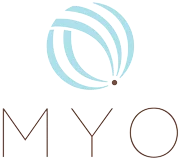Catherine Collett
About Catherine
- Training: 850+ hours
- School: Lauterstein-Conway Massage School
- Licensed since: 2003
- With Myo since: 2006 (founder)
- Continuing Education: Structural Bodywork, Lymphatic Drainage, Cross-Fiber Corrective Muscle Therapy
- Areas of expertise: Myofascial Release, Pain Management, Lymphatic Drainage
Please call 512-458-4696 to book an appointment with Catherine.
Catherine Collett has been in practice since 2003 with a focus on pain management, structural bodywork, myofascial release, and lymphatic drainage. She is a graduate of The Lauterstein-Conway Massage School clinical program and received her lymphatic training in through the Upledger institute. She has experience working with both acute and chronic injuries and surgeries, with the ability to assess and reduce inflammation, adhesions and scar tissue. Her massage style is often described as deep, intuitive, thorough, and responsive. In addition to massage therapy, she has a background in anthropology and development working with an Austin-based non-profit, the Kalahari Peoples Fund.
How long have you been a licensed massage therapist?
I have been licensed since 2003, so over 18 years.
How many hours of training do you have?
I have at least 800 hours of training.
Why did you choose massage therapy as your career?
I have always had an interest in wellness and healing. I studied pre-medicine and medical anthropology in college. I was pursuing a career in anthropology when I enrolled in massage school; I thought massage would be a flexible job to supplement my income. I quickly discovered that my heart was more in the massage. The body is infinitely complex and I love the problem-solving involved in structural bodywork
Where did you go to school for massage?
I went to the Lauterstein-Conway Massage School.
How do you describe your massage/work to others?
My clients usually describe my work as deep, precise and responsive. The technique I use most is Myofascial release, but I typically integrate trigger point, cross-fiber friction, circulatory work and lymphatic drainage as needed.
What are some examples of Continuing Education you are interested in and why?
I’m very interested in attending the Rolf Institute. Rolfing is the most thorough and advanced training in structural bodywork available. I’m also drawn to other clinical trainings that can teach me more about body systems and kinesiology, as well as cross training in movement therapies such as Pilates so that I can give better suggestions and at-home care.
How has receiving massage affected you personally?
I used to have a classic hunched computer posture; I’ve seen dramatic changes there.
What do you do to stay healthy?
I swim, do yoga, receive massage, and eat unprocessed foods.
What do you like about working at Myo Massage?
I’m biased, of course – Myo is my baby. We have an amazing community of therapists with complementary skills, and I truly look forward to working with and learning from them every day.
How do you approach pain management massage?
I rely on palpation and structural knowledge to identify patterns and address the sources of discomfort. Every touch is purposeful: I am always listening to the tissue, adjusting my speed, depth and angle to get the best results.
What techniques do you frequently use in pain management massage?
It depends if the client has a recent injury. For clients who are not in an acute phase, I primarily use Myofascial release, which I find is the most effective at changing the resting state of the muscles. Cross-fiber friction is helpful for scar tissue release and inflamed tissue. I also use Lymphatic Drainage to reduce inflammation and pain and to calm the nervous system in more acute cases.
What is lymphatic drainage and who do you recommend it for?
Lymphatic Drainage is a gentle technique used to stimulate and clear congestion in the lymphatic system. The lymphatic system is responsible for picking up practically all the body’s wastes as well as foreign objects such as viruses and bacteria, which it transports to the lymph nodes to be broken down by immune cells. Sometimes due to injury, illness, physical inactivity or tension, the lymphatic system can get overwhelmed and backlogged, which can lead to immune problems, brain fog, achiness, or swelling. Lymphatic drainage helps decongest the area and get the fluid moving again. It’s very light – too much pressure actually closes the capillaries – but it’s very effective at reducing inflammation and edema associated with injuries or surgery, auto-immune disorders, and allergies. As a side benefit, it’s extremely calming to the nervous system, so I’ll sometimes use it with clients who have chronic stress, trauma or trouble sleeping.


